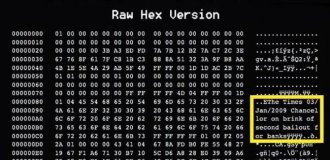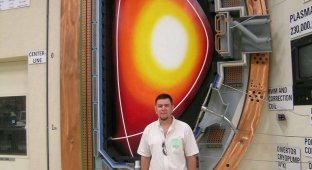Large Hadron Collider (30 photos)
The European Organization for Nuclear Research is relaunching the Large Hadron Collider /LHC/ after a year-long overhaul. The 27-kilometer particle accelerator, located in the suburbs of Geneva, was launched last year, but the launch failed due to poor electrical contact, damaging 53 of the accelerator's 9,300 superconducting magnets. On Saturday night, for the first time since the fall of last year, scientists managed to conduct a particle beam along the entire 27-kilometer ring of the accelerator, which was stopped after an accident 14 months ago.
Collected in this issue are photographs taken during the repair of the Large Hadron Collider, as well as experiments carried out at various stages of its creation.


1. Installation of an ATLAS heat meter in November 2005. In the huge ATLAS detector, eight toroidal magnets with a heat meter can be seen before they are placed in the middle of the detector. This heat meter will measure the particle energy produced when protons collide at the center of the detector. (Maximilien Brice, © CERN)
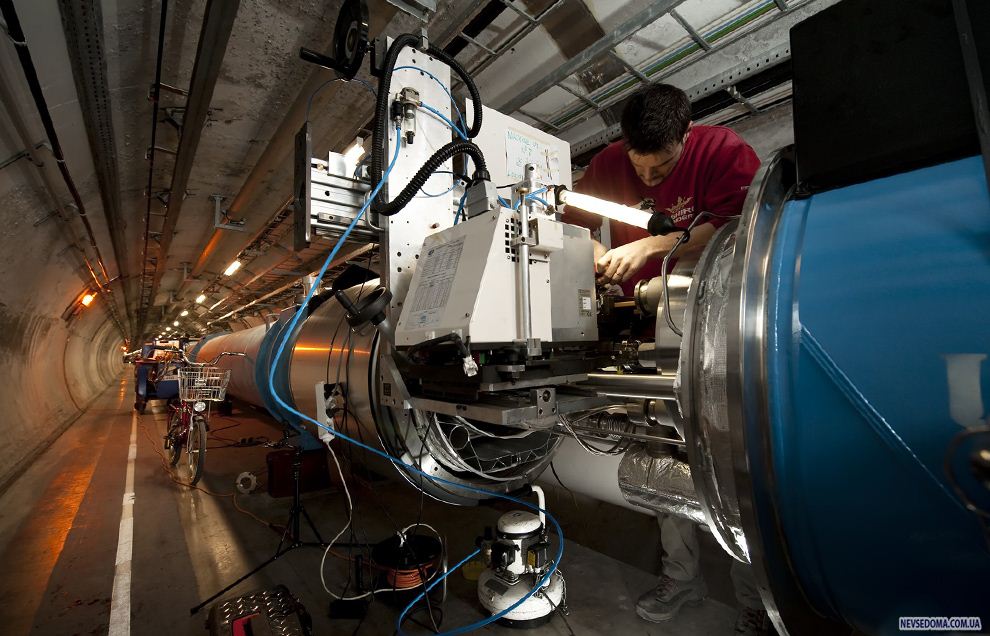
2. The process of ultrasonic and induction welding between two collider magnets in sector 3-4 during repair work on March 26, 2009. (Maximilien Brice, © CERN)
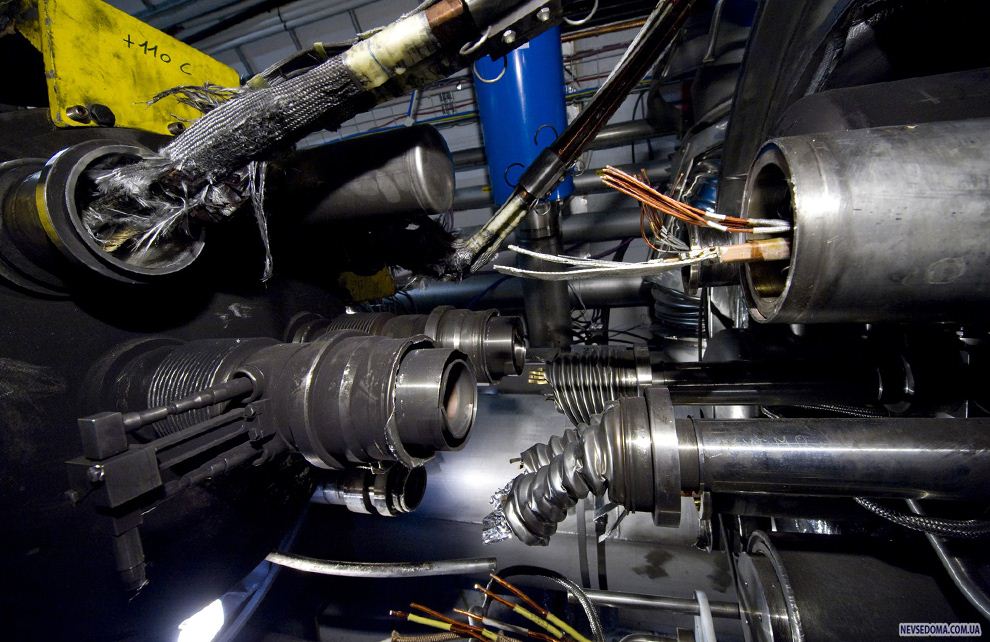
3. Visible damage to the magnets of the Large Hadron Collider in sector 3-4 on November 12, 2008. On September 19, 2008, when the collider was turned on, poor electrical contact between the two accelerator magnets caused a helium leak - 6 tons of helium leaked into the tunnel. The resulting temperature spike damaged 53 magnets. (Maximilien Brice, © CERN)

4. Details of damage to the collider magnets in sector 3-4 on September 19, 2008. (Maximilien Brice, © CERN)
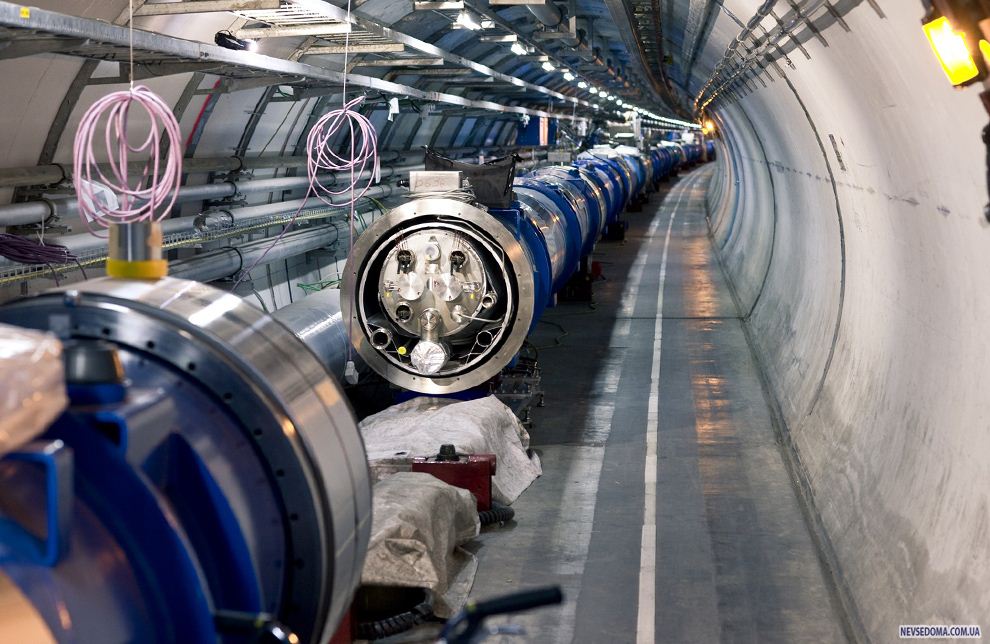
5. Movement and installation of the quadrupole in sector 3-4 in the tunnel of the Large Hadron Collider on April 30, 2009. (Maximilien Brice, © CERN)
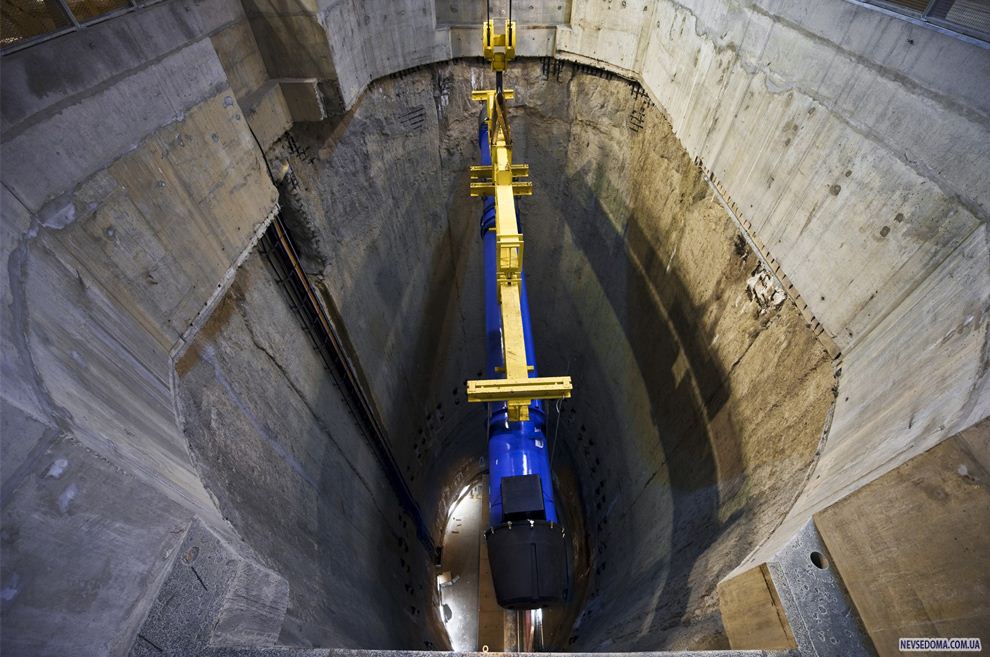
6. Substitute magnet for sector 3-4 is lowered into the tunnel on January 19, 2009. (Maximilien Brice, © CERN)
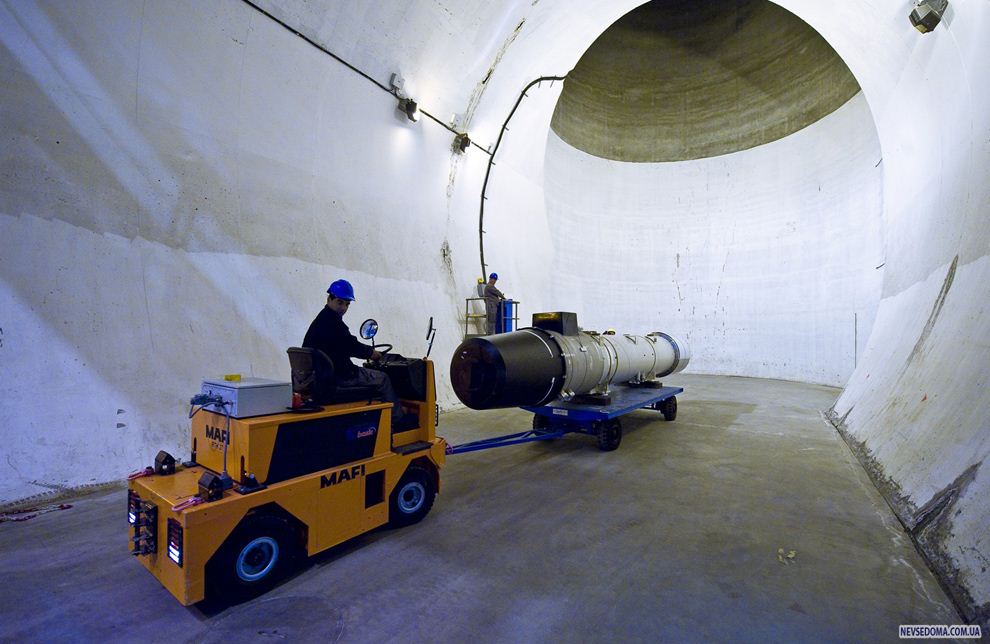
7. Movement and installation of the quadrupole in sector 3-4 in the tunnel of the Large Hadron Collider on April 30, 2009. (Maximilien Brice, © CERN)
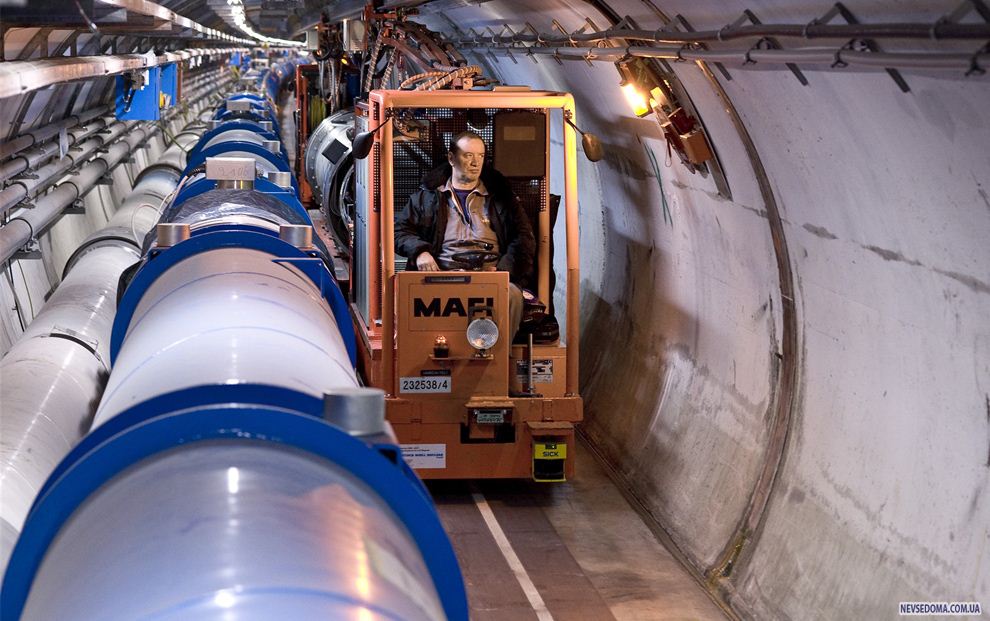
8. Transportation of a quadrupole lens through sector 3-4 in the collider tunnel on April 30, 2009. (Maximilien Brice, © CERN)

9. Installation of a new dipole in the collider tunnel in sector 3-4 on April 6, 2009. (Maximilien Brice, © CERN)

10. Details of one of the 18 kilowatt collider refrigerators, which is part of a large cryogenic system used to maintain the temperatures needed for super-liquid helium (-271.25 degrees Celsius). Photo taken April 28, 2008. (Mona Schweizer, © CERN)
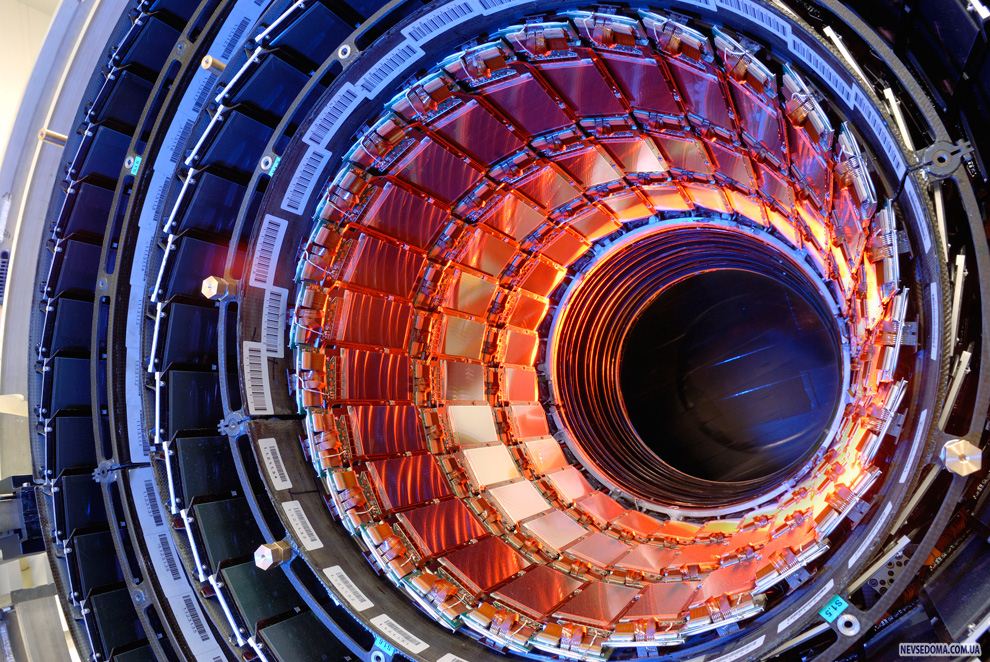
11. Muon solenoid controller sensor with silicone strips is almost finished. In this image, you see three conconfentric cylinders, each consisting of many silicon strip detectors (bronze-colored rectangular devices that look like digital camera batteries). They surround the place where the protons collide. (© CERN)
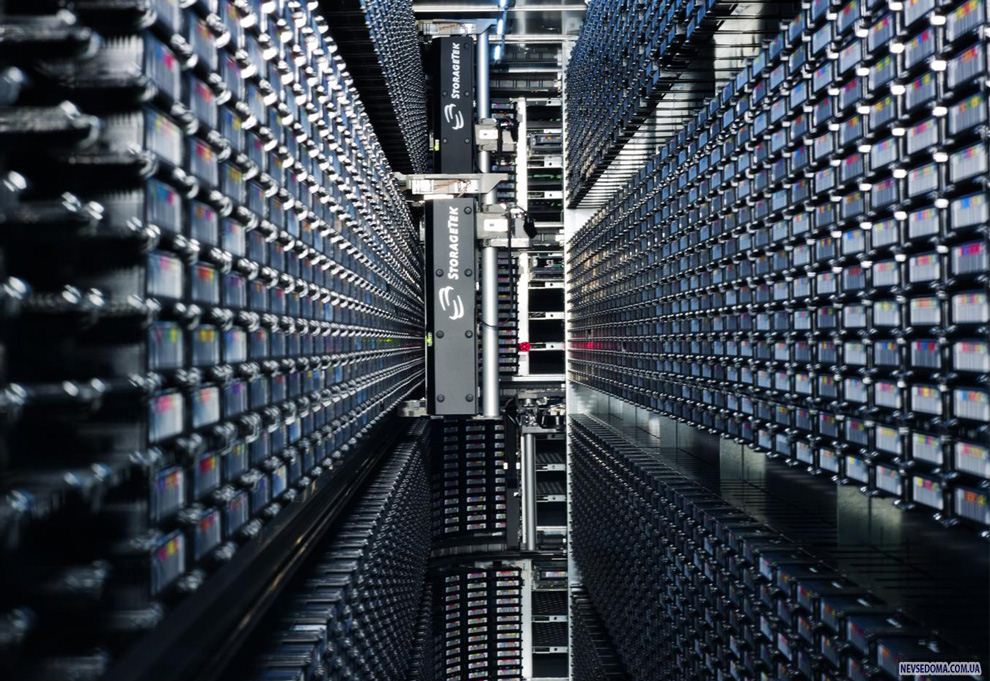
12. Basement with an automated tape for magnetic recording in the computer center CERN September 15, 2008. These tapes are used to store Hadron Collider data, from which chunks of data are copied to an overlay disk cache for quick and easy access. The management of cartridges with magnetic tapes is now fully automated, they are stored in special basement rooms on shelves, from where they are taken out by a robot. (Claudia Marcelloni; Maximilien Brice, © CERN)
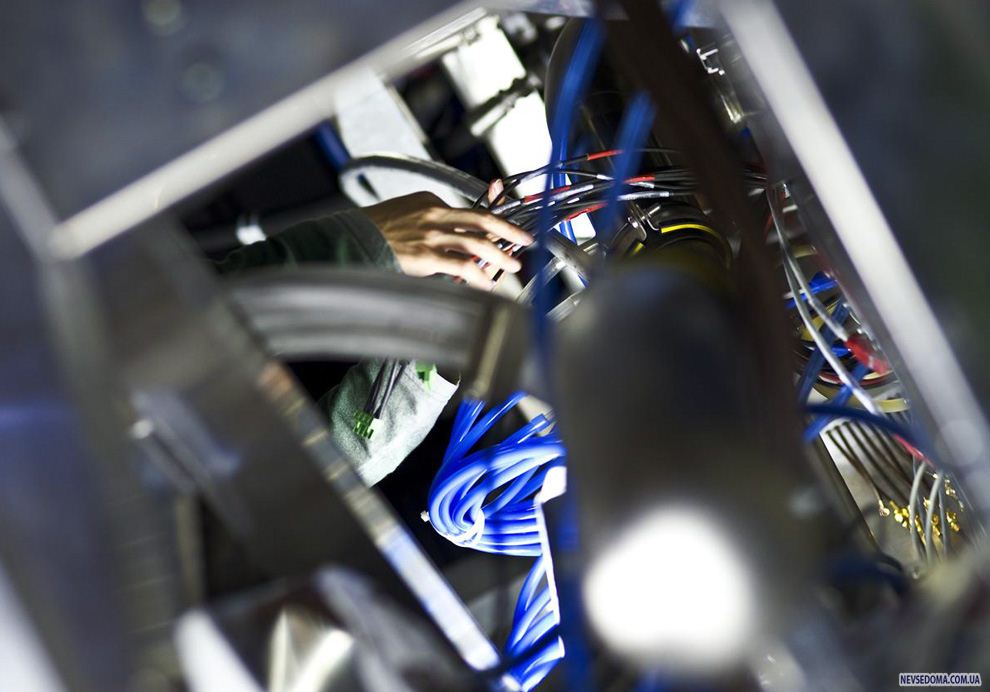
13. Work on the detectors inside the L3 magnet of the ALICE experiment on July 10, 2008. (Mona Schweizer, © CERN)
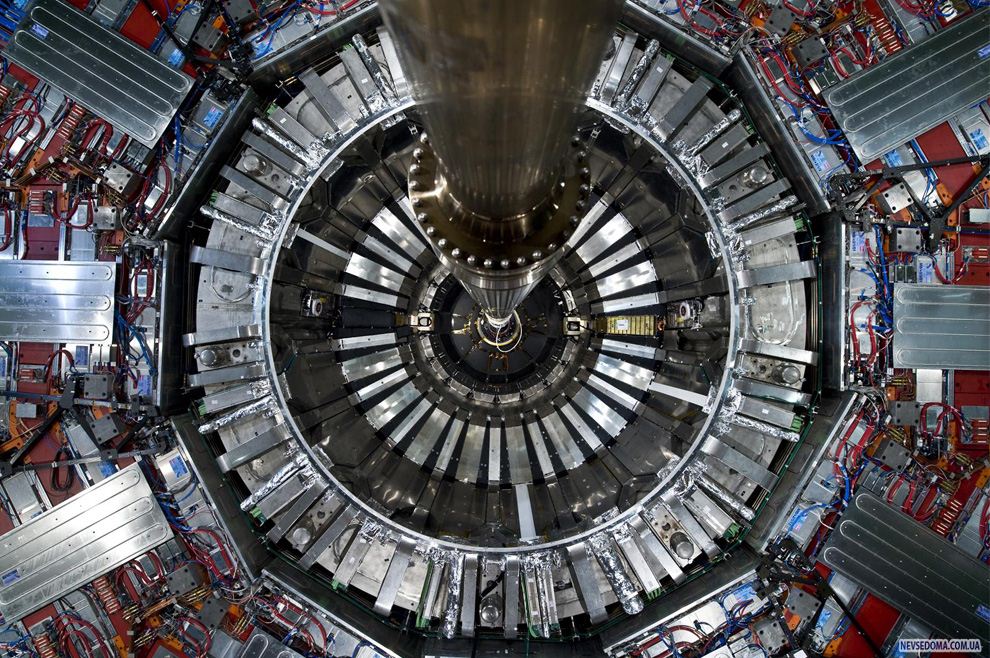
14. CMS detector before closing on August 17, 2008. (Maximilien Brice; Michael Hoch; Joseph Gobin, © CERN)
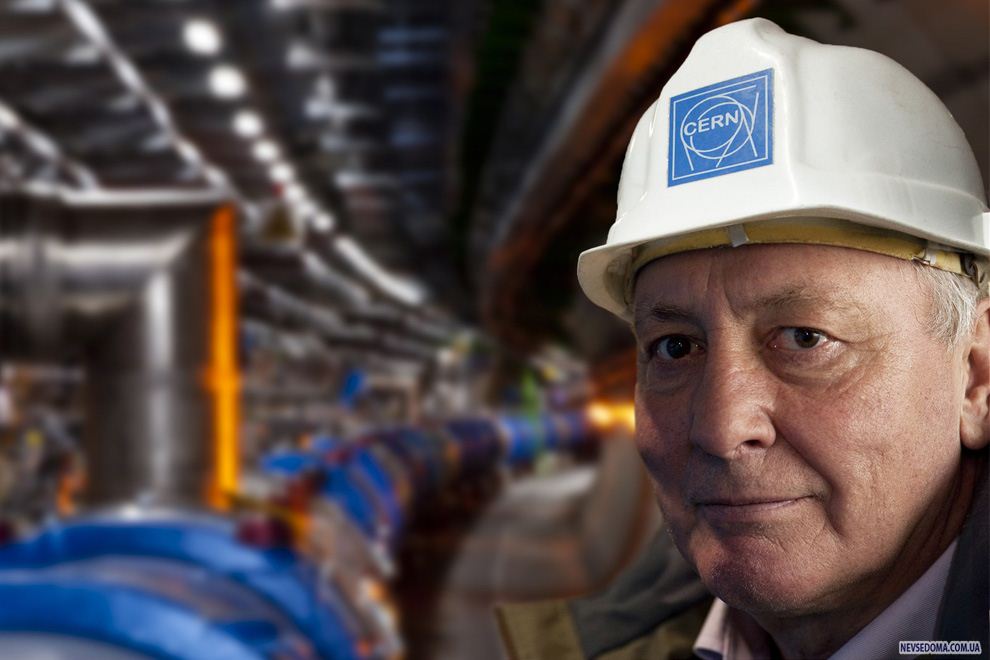
15. Lyn Evans - project manager of the Large Hadron Collider - December 3, 2008. (Maximilien Brice, © CERN)
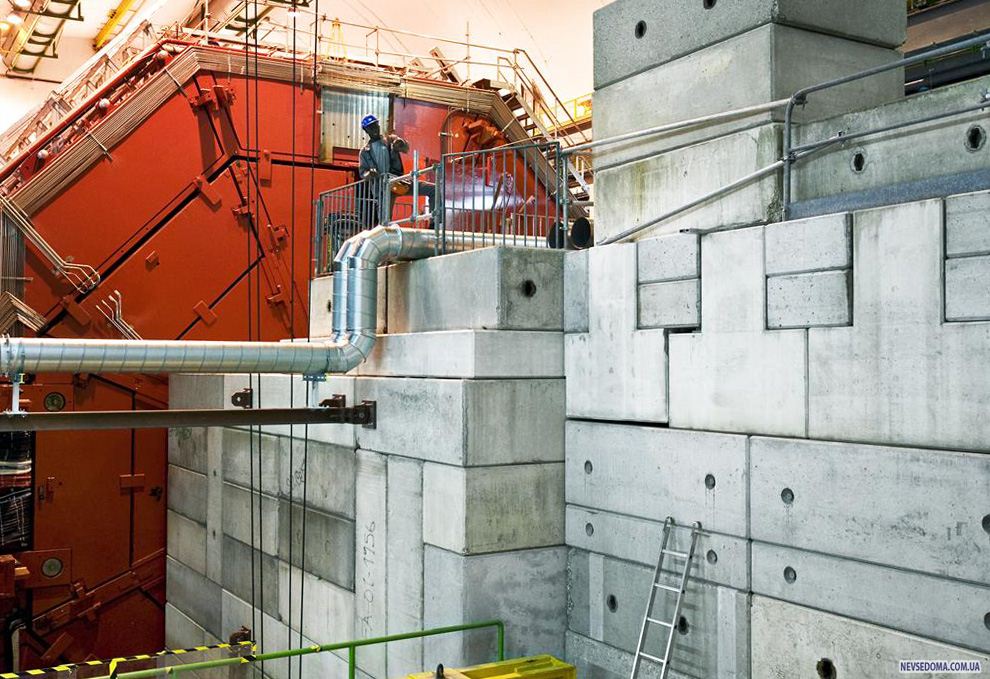
16. Shielding of the L3 magnet in the ALICE 10 detector and
July 2008 (Mona Schweizer, © CERN)
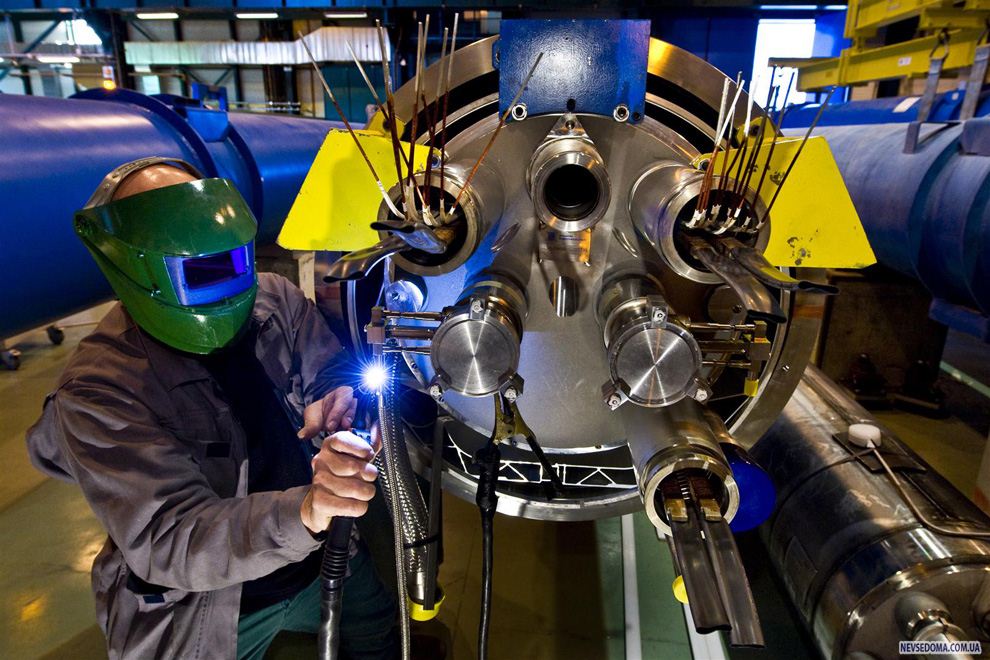
17. Last preparations for replacing the magnet, which is already ready for lowering into sector 3-4 on November 27, 2008. (Maximilien Brice, © CERN)

18. Tunnel with part of the beam trap of the Large Hadron Collider in sector 6. Beam traps are absorption mechanisms in which powerful beams can be fully extracted from the collider, which consists of seven carbon cylinders 700 mm in diameter. These cylinders are placed in a water-cooled steel cylinder surrounded by 750 tons of concrete and iron shielding. The sign at the top warns of the presence of helium, argon and/or nitrogen in the pipes - gases that (if leaked) can replace oxygen and cause unconsciousness. (Maximilien Brice; Claudia Marcelloni, © CERN)
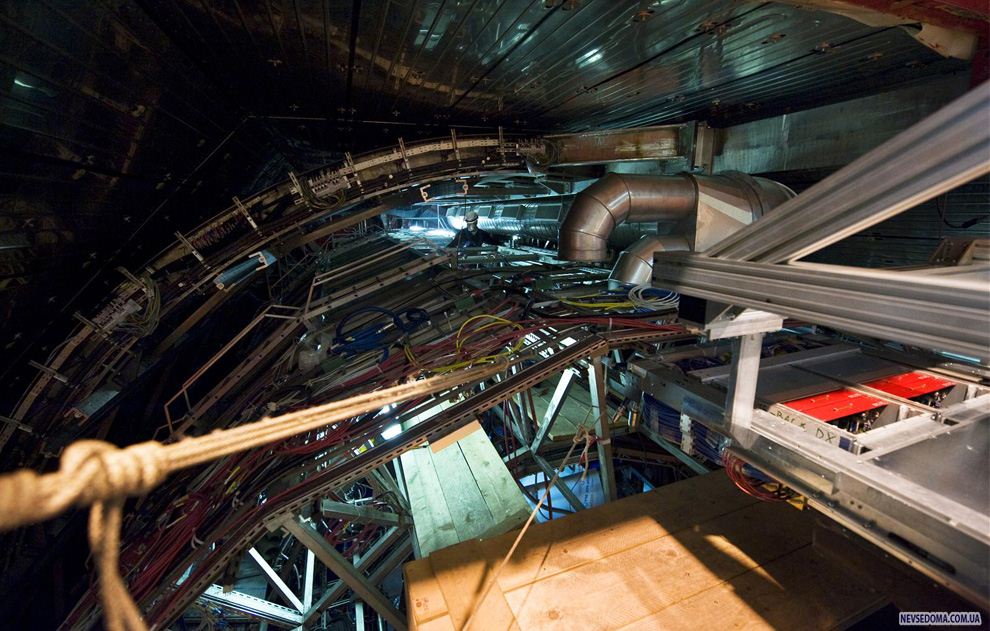
19. Introduction of the transit time module into the upper part of the ALICE detector. Charged particles at intermediate pulse intervals are recognized in ALICE by the transit time detector. Time, together with momenta and track length, is measured by special detectors and used to calculate the particle mass. (Mona Schweizer, © CERN)
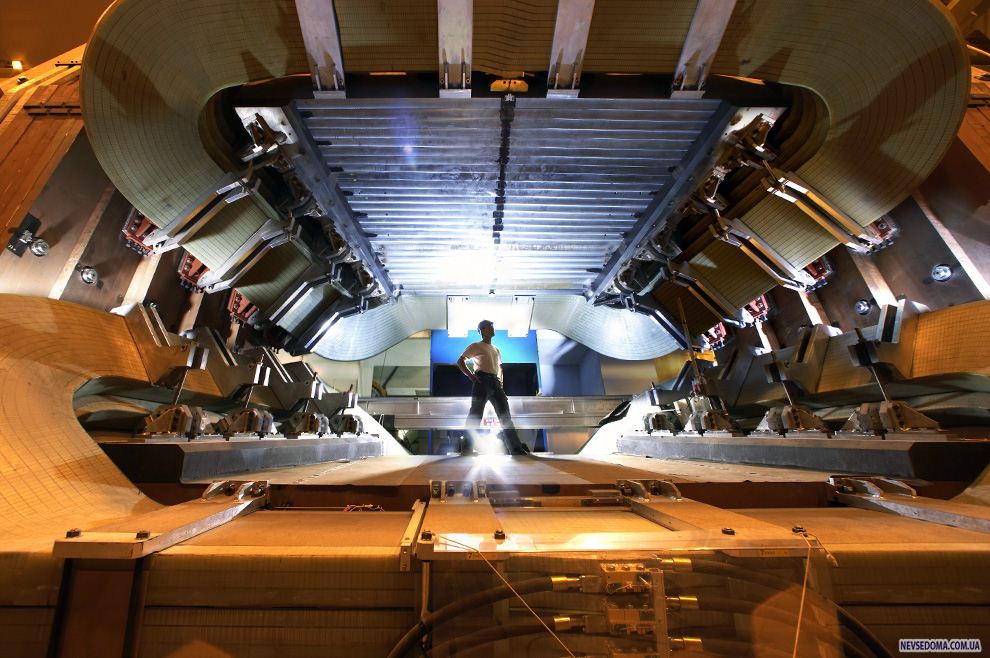
20. Part of the LHCb magnet on September 5, 2008. (Peter Ginter, © CERN)
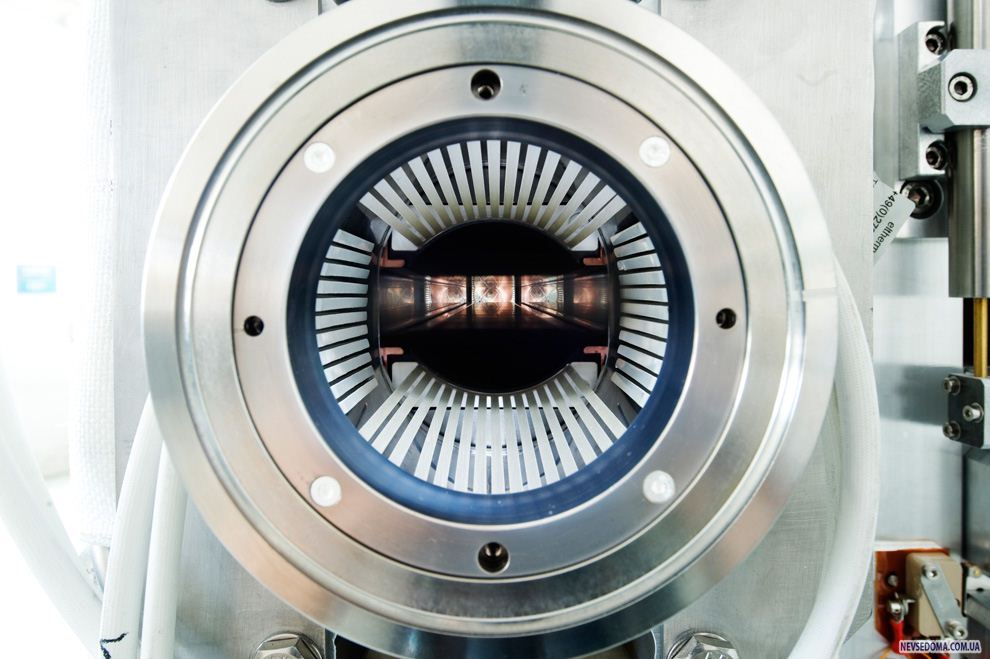
21. Device for collimation in the collider. A powerful collimation system protects the accelerator from damage resulting from inevitable normal and abnormal beam loss. (Claudia Marcelloni, © CERN)
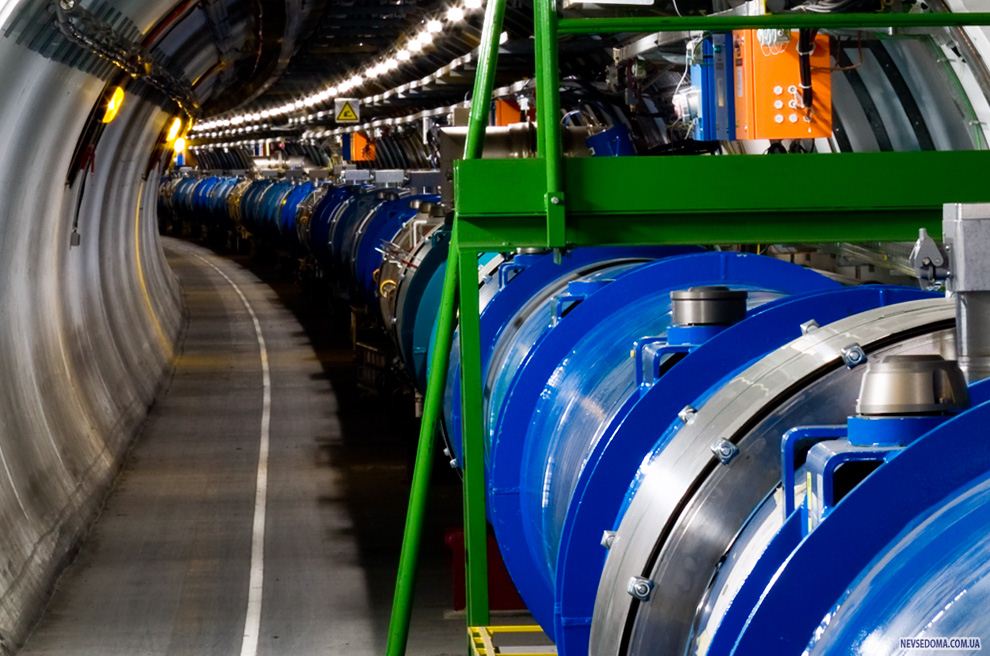
22. View of the Large Hadron Collider in the tunnel at the point of connection with the beam trap in sector 6 on July 25, 2008. (Maximilien Brice, © CERN)
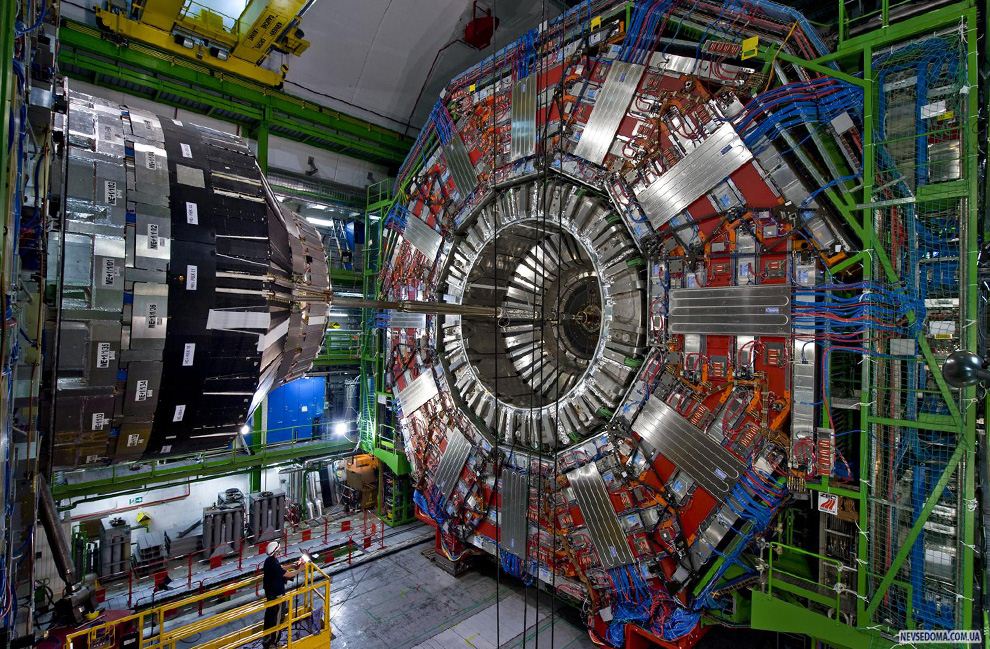
23. View of the CMS detector before closing on August 17, 2008. (Maximilien Brice; Michael Hoch; Joseph Gobin, © CERN)

24. Last photos of the L3 magnet before its closure and isolation on July 28, 2008. (Mona Schweizer, © CERN)
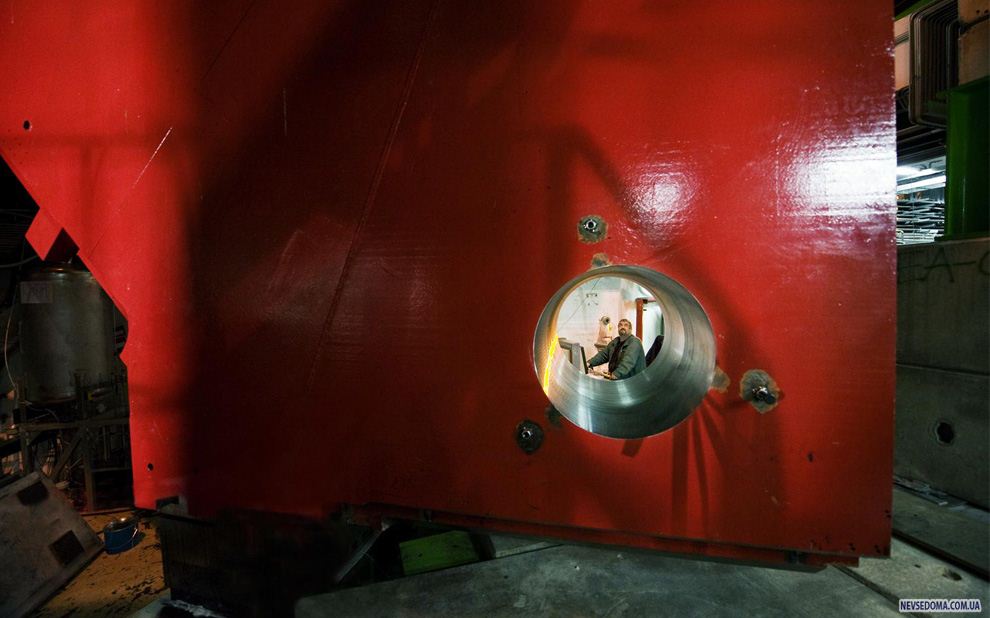
25. Closing of the L3 door, 76 cm thick and weighing 430 tons, on side I of the ALICE detector on June 11, 2008. (Mona Schweizer, © CERN)
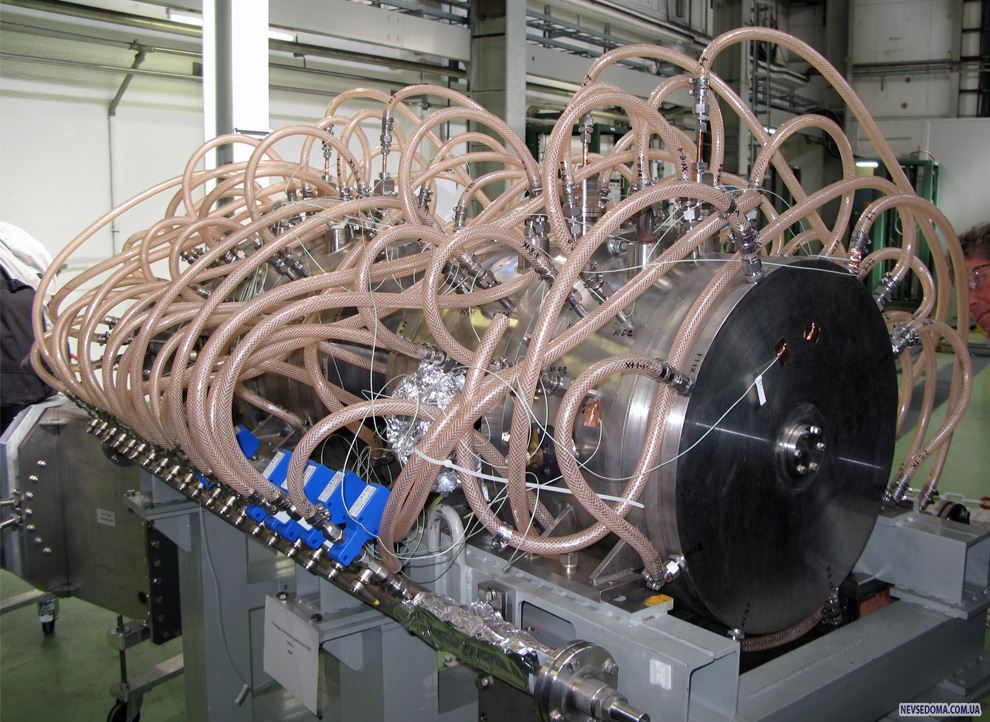
26. Compartment of high frequencies of the collider. In the high frequency compartments, protons are launched - one per circuit to increase their speed. (Wikimedia user Rama / CC BY-SA)
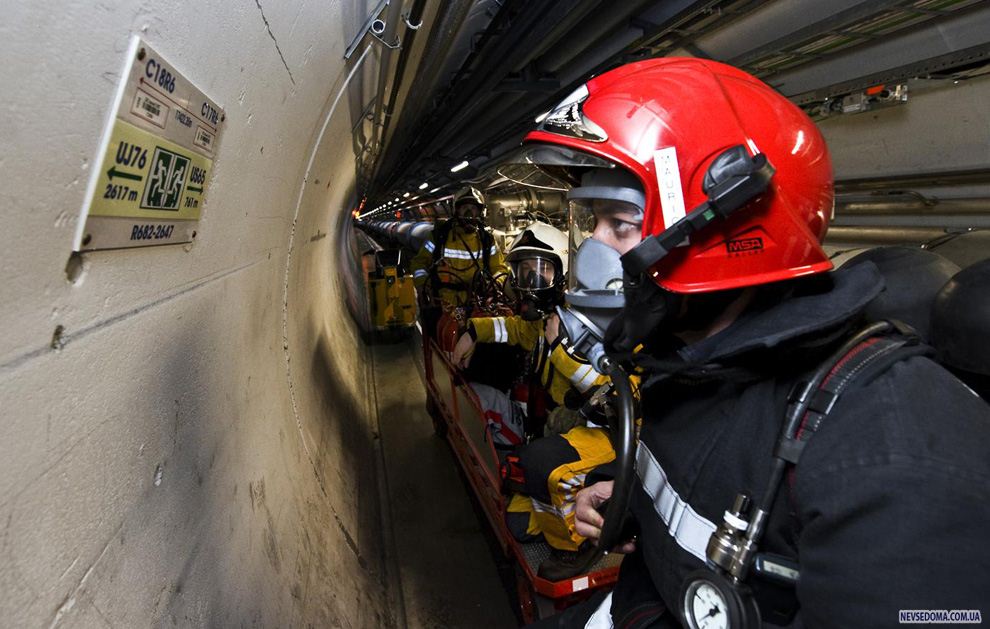
27. A firefighter examines an emergency exit in the tunnel of the Large Hadron Collider on February 21, 2008 during training with French, Swiss and CERN firefighters. (Maximilien Brice, © CERN)
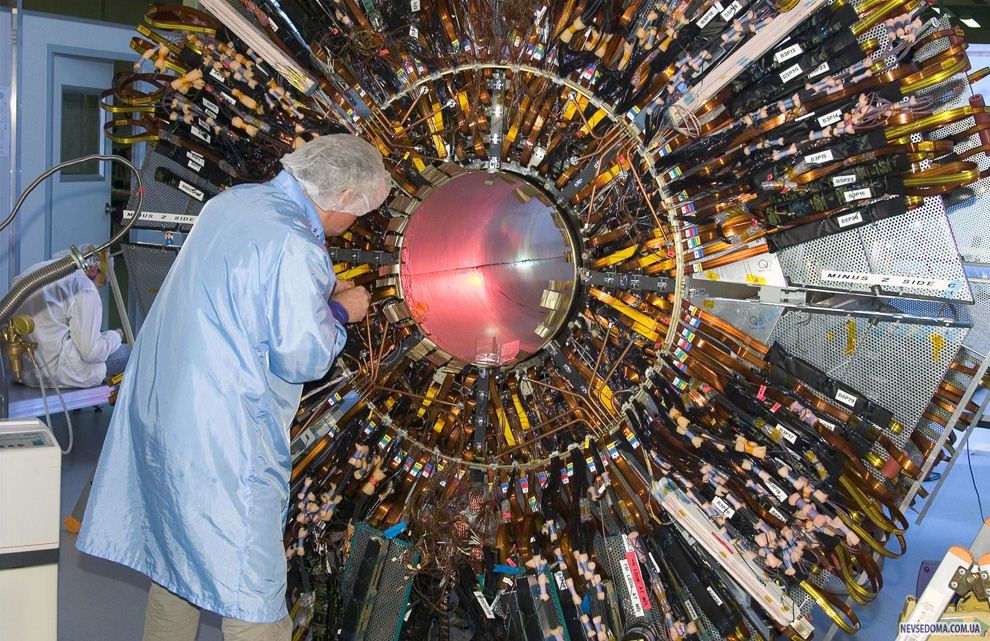
28. Work on ATLAS semiconductor sensor. Work on it is truly jewelry. A semiconductor sensor will be installed in a barrel next to the ATLAS detector core to determine the path of particles produced in proton-proton collisions. (Maximilien Brice, © CERN)

29. Merging three bodies into a pixel barrel ATLAS is the internal tracking device of the CMS detector. (Claudia Marcelloni, © CERN)

30. Assembly of the two main components of the ATLAS internal detector. A semiconductor sensor is built into the transition radiation sensor for the ATLAS detector experiment in the collider. These are two of the three main components of an internal detector. They will work together to measure the trajectories produced in proton-proton collisions at the center of the detector when the collider is turned on. This photo was taken on February 22, 2006. (Maximilien Brice, © CERN)



